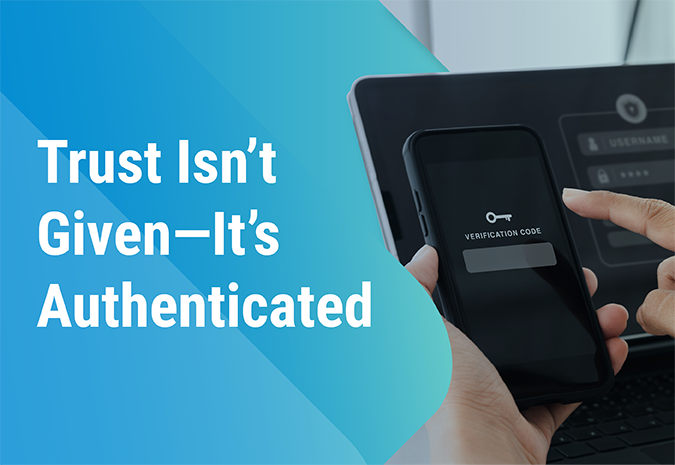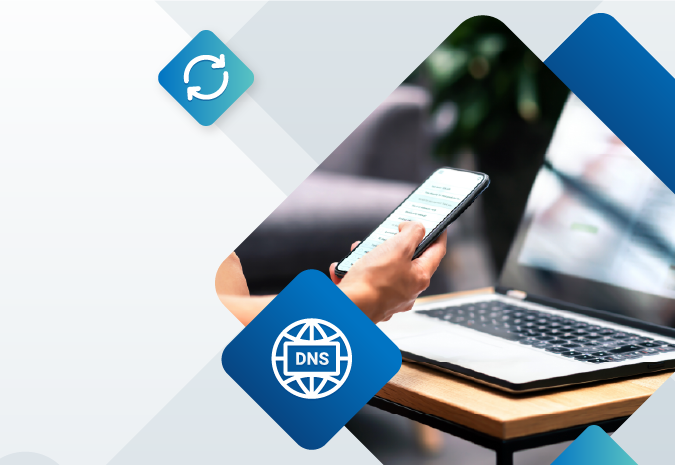The Role of Authentication in Online Security

The ability to prove identity is the starting point for almost every secure interaction online. Whether you’re authorizing a software update, logging into an enterprise portal, or securing a machine-to-machine handshake, authentication is the gatekeeper that determines digital trust.
And in a world where attacks are more automated, AI-enhanced, and identity-driven than ever, the cost of getting authentication wrong is growing by the day.
The expanding role of authentication in modern security
Authentication used to be a narrow concept, focused on verifying users during login or access attempts. But today, it sits at the heart of everything from zero trust architectures to secure code signing, and it underpins digital trust across users, devices, software, and systems.
This shift reflects a simple but powerful reality: Security can’t exist without verified identity. And that identity has to be verified consistently, accurately, and in ways that are resistant to interception, impersonation, or manipulation.
As threats grow more targeted and persistent, authentication becomes a continuous process—not a one-time event.
Identity signals: The real battleground
Authentication depends on identity signals that come from multiple layers:
- Users: Biometrics, passkeys, device-bound credentials
- Devices: Certificates, secure elements, hardware roots of trust
- Software: Signed code, verified origins, SBOM attestation
- APIs and machines: mTLS, mutual authentication, certificate-based access
These signals are only trustworthy when they’re issued by verified authorities and managed securely across their lifecycle. That’s where public key infrastructure (PKI) and modern certificate automation come in—not as optional tools, but as essential infrastructure.
Why passwordless is just the starting point
The rise of passwordless authentication has been a major step forward. By eliminating shared secrets and replacing them with cryptographically bound credentials like passkeys or device-based biometrics, organizations have reduced reliance on vulnerable systems like SMS 2FA or reused passwords. This has significantly improved both the user experience and resistance to phishing attacks.
But for security teams, passwordless isn’t the finish line. It's one part of a much broader effort to authenticate not only users, but also devices, services, and software. In an enterprise context, authentication has to scale beyond browser-based access to support edge devices, API endpoints, CI/CD workflows, and autonomous systems operating without human intervention.
Take IoT deployments, for example. Devices in the field have to authenticate securely even when they don’t support traditional user interfaces. They need embedded certificates, hardware-based roots of trust, and policy enforcement that works under bandwidth or power constraints. Similarly, software updates must be verified as authentic before execution—not with a username and password, but with a cryptographic signature that confirms the code’s origin and integrity.
Continuous authentication and context-aware access
Authentication also plays a central role in adaptive access control. It’s not enough to validate identity one time at login; identity must be continuously evaluated in context—considering device health, location, behavior, and risk posture. This is where strong, persistent identity signals like certificates, signed tokens, or biometric verifications become crucial to enforce dynamic policies.
To support all of this, authentication systems need to be deeply integrated and flexible spanning platforms, working across hybrid environments, and supporting both human and non-human identities with equal rigor. That’s why more organizations are turning to certificate-based authentication—not just for its strength, but for its interoperability and automation potential.
Authentication as a foundation for Zero Trust
In a Zero Trust model, nothing is inherently trusted—every access request must be authenticated, authorized, and continuously evaluated. That’s only possible with a robust, flexible authentication layer.
Strong authentication gives security teams:
- High-confidence identity signals for people, devices, and workloads
- The ability to enforce granular policies based on verified identity
- A way to evaluate trust posture continuously—not just at login
But the real power comes when authentication is automated, auditable, and scalable. That's why modern architectures rely on certificate-based authentication, integrated with device management and CI/CD pipelines.
Preparing for post-quantum authentication
The shift to post-quantum cryptography (PQC) is one of the most critical transitions in modern security. As standards solidify and government guidance evolves, organizations need to prepare their authentication systems to support new algorithms and protocols—without starting from scratch.
Crypto-agility is key. That means being able to rotate keys, deploy hybrid certificates, and adapt authentication workflows as cryptographic standards change. Solutions that support automated, certificate-based authentication will have a head start, because they’re already structured to manage credential lifecycles at scale.
Forward-looking teams are already testing PQC algorithms in parallel environments and making procurement decisions based on long-term cryptographic resilience. Authentication systems built today should be ready for what comes next—not just what works now.
Interoperability and machine-readable trust
Equally important is interoperability. Authentication can’t live in isolation inside one cloud provider, one business unit, or one product stack. It has to operate across identity ecosystems, federated environments, supply chains, and multi-cloud networks. That’s only possible when credentials and protocols are standards-based, portable, and backed by trusted roots.
And as more systems operate autonomously—whether in the form of IoT devices, AI agents, or automated CI/CD workflows—authentication must support machine-readable trust. Every connection, every code push, every API call must be verifiable, auditable, and enforceable without relying on human intervention.
Organizations that get this right won’t just have stronger authentication—they’ll have a foundation built for scale, automation, and long-term resilience.
The latest developments in digital trust
Want to learn more about topics like authentication, crypto-agility, and digital trust? Subscribe to the DigiCert blog to ensure you never miss a story.




